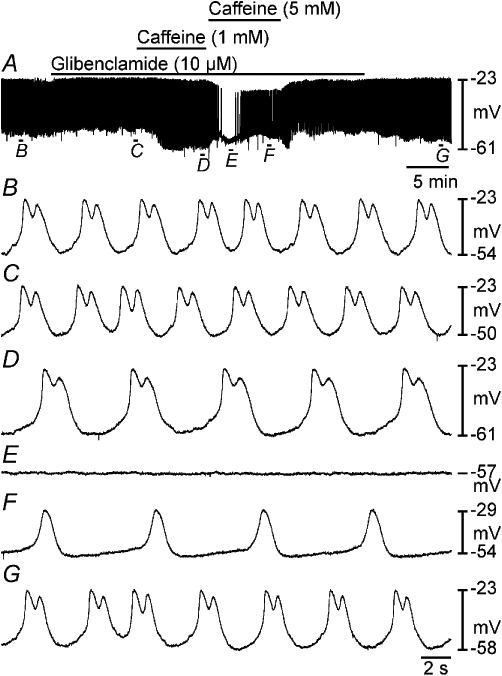Figure 5.

Glibenclamide partially antagonized the effects of caffeine on myosalpinx slow waves. (A) A period of control slow waves followed by application of glibenclamide (10 µM, black bar), which produced membrane depolarization and reduced slow wave amplitude. In the continued presence of glibenclamide, caffeine 1 and 5 mM were exogenously applied (as indicated by black bars). Caffeine (1 mM) caused membrane hyperpolarization and a reduction in slow wave frequency but did not reduce the amplitude of slow waves. Caffeine (5 mM) caused an initial transient hyperpolarization and loss of slow waves, but slow wave activity recovered in the continued presence of caffeine. Following washout of caffeine (5 mM), slow wave frequency recovered, and washout of glibenclamide membrane potential returned to control levels. (B–G) Expanded time scales of the sections indicated in (A).
